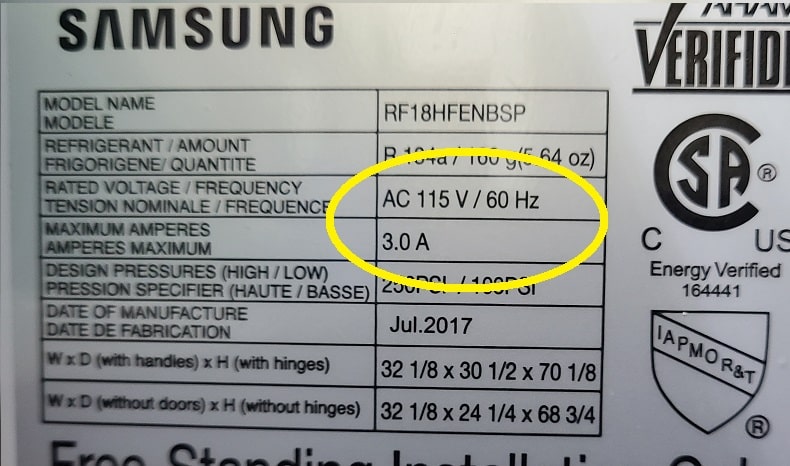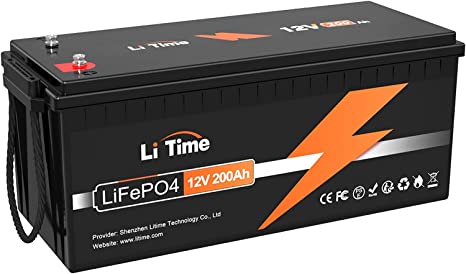How Many RV Solar Panels Do I Need, Get It Right First Try
 How many solar panels do I need?
How many solar panels do I need?
RV Solar systems can be anything from a single panel you aim at the sun while you’re parked somewhere, to a dozen or more panels mounted to your roof. How much solar is the right amount? Sizing your RV Solar system properly can save you time and money as well as make sure your system performs as expected. This article is focused on figuring out just how many solar panels you need.
RV Solar System Sizing
People have told us their only big road block to getting a system, is not knowing how much solar they need. I will even admit I didn’t know either, and purchased an all in one kit that works great, but isn’t quite as big as I needed. You can read my review of that kit here.
It doesn’t matter if you’re living the Van Life or RV Life or rocking a School Bus Conversion, the way you pick the size of your system is the same.
The first step is to find out how much power you are going to be using. This is the most tedious part, but also the most important. You need to add up the total electricity used from every appliance you have. The easiest way to figure out the total power is to convert all of your calculations into watts. Don’t worry, there is an easy way to do this too!
RV Solar Power Math
All of your major appliances will have a sticker on them somewhere that says how many Amps its draws and how many Volts it runs on. For example, we have a residential fridge in our RV and inside the door I find the power rating sticker below.

Here you see that our fridge runs on 115 Volts and draws 3 Amps. To convert this to watts, we use the formula AMPS x VOLTS = WATTS. So doing 3 x 115 = 345, we know that our fridge is using 345 Watts per hour when it is running. I figure the fridge is only actually running half of the day, and in standby mode the other half, so we take our Hourly Wattage (345) and multiply that by the Run Time (12) per day and get 4,140 Total Watts Per Day.
Easy right? Now we just have to do that same thing for all the appliances in your RV, and write it down, so we can tally up the total watts per day for all of them. Once we have a total wattage for everything we are going to be running in our RV, then we can move on to the next step, which is picking a type of battery to store our RV Solar Power.
Flooded Lead Acid
When it comes to RV Batteries there are 3 main types you have to choose from. The most common one, and the one that is most likely in your RV from the factory, is a Flooded Lead Acid (FLA) Deep Cycle.
It is similar to the battery in your car, but designed to be able to drain down before being recharged. The FLA style of battery is capable of a 50% discharge without damaging it before it needs to be recharged.
A FLA Deep Cycle is good for an average of 5 years before they need to be replaced. While they do have the lowest up front costs, they do require some maintenance to maximize their life span. After an average of 200 discharge and recharge cycles, a FLA battery will start to have a decline in the amount of energy they can store.
FLA batteries also need to be in an exterior compartment, and that compartment needs to be vented to the outside air. During the charging cycle they produce gas emissions that could kill you if they are in an interior area of your RV or Van.
AGM Batteries
The next type of battery is called an Absorbent Glass Matt (AGM) Battery. An AGM battery is an advanced version of the standard FLA Battery. One major attraction to them is that they are completely sealed, so there is no danger of battery acid being spilled out of them.
AGM Batteries are also maintenance free and last on average twice as long than a standard FLA Battery. On the up front cost they are going to cost 20 to 50 percent more per battery depending on the size of the battery.
LiFePO4 Batteries
The last type of battery is a Lithium Iron Phosphate (LiFePO4). This is considered to be the holy grail in RV Solar systems. A LiFePO4 battery can be discharged 80 percent without loss of power or doing damage to the battery itself. Most LiFePO4 batteries will last through 5,000 charging cycles.
At a rate of one charge cycle per day with a solar system, it should last you around 12 years in your RV. Another advantage to the LiFePO4 is it can handle much larger sustained power usage than its lead acid counterparts. If you are planning on running an AC unit with your solar system, this is the way to go.
The LiFePO4 does have the highest up front cost, at an average of 3 times the price of a FLA battery, however they are also only one third the weight. Depending on the size of your RV Solar system you may need several batteries to store the power, so that weight can add up fast.
How Many Batteries?
Once you have decided which type of battery is the best fit for your budget and power needs, the next step is to figure out just how many batteries you need. For this we are going to refer to the Total Watts Per Day from step 1. So lets say that after you added it all up, you got a total of 10,000 watts per day.
You can convert the Amp Hours of the battery you choose into watts using the same formula to keep everything easy. For this example lets assume we are going to use a 200 Amp Hour LiFePO4 battery. So doing our math of 200 Amp Hours X 12 Volts = 2,400 Watts.
In order to run everything for 24 hours without a recharge, you would need 5 batteries. If you want to be able to run everything for 48 hours without a recharge, you would need 10 batteries. You are only limited on the number of days you go by your own budget and available battery space.
Many RV Solar professionals recommend being able to run for 48 hours on battery power alone in case of foul weather.
How Many RV Solar Panels Do I Need?
So here is where the math gets a little tricky, but not impossible. You need to know how much Peak Sun you are going to get each day to charge your batteries back to 100 Percent. Near the equator you get more, near Canada you get less. We are going to use Average US Irradiance of 5.3 to help figure this one out. Since we are going to be traveling all over the place, the number will change anyway based on your location.
To find out how much Total Solar Power you need, you divide your daily need by the 5.3 average Peak Sun time. Using our 10,000 watt example from above, we divide 10,000 by 5.3 for a total of 1,886 Watts Of Solar Panels Needed. To give yourself a cushion, and make your math easier, round it up to 2,000 Watts Of Solar Panels.
There are several combinations you can do to achieve the 2,000 Watts you need. You can do 20 One Hundred Watt Panels. Or you can do 10 Two Hundred Watt panels. You can do 5 Four Hundred Watt Panels. You see what I’m getting at.
The approximate RV Solar Panel size is 2 Feet by 4 Feet. How much available roof space you have, will determine how manel panels you can actually fit up there, which will tell you what wattage you need. For example, say you have enough room on the roof of your RV to only fit 4 panels. In order to get the needed 2,000 watts, you would need Four 500 Watt panels.
What Size Solar Charge Controller Do I Need?
The answer to this question will depend entirely on the Solar Panel Voltage, Solar Panel Wattage, and if you plan to wire your Solar Panels in Series, Parallel, or Series-Parallel. Your best course of action is to ask your RV Solar dealer what gauge wire you will need to go from the roof of your RV, which way the panels should be wired together, and which of their charge controllers mates with the rest of the system the best.




